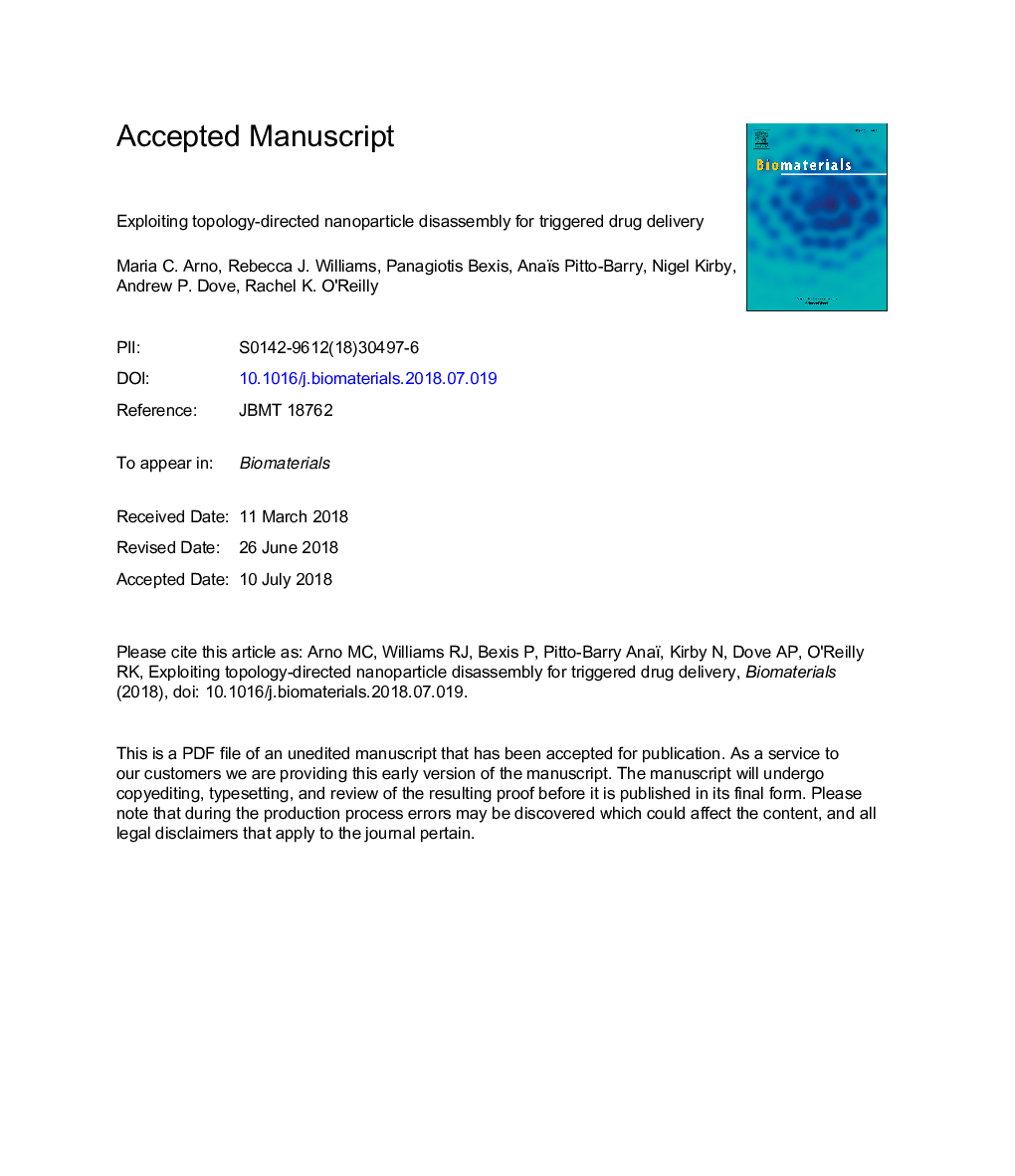| Article ID | Journal | Published Year | Pages | File Type |
|---|---|---|---|---|
| 6484340 | Biomaterials | 2018 | 26 Pages |
Abstract
The physical properties of cyclic and linear polymers are markedly different; however, there are few examples which exploit these differences in clinical applications. In this study, we demonstrate that self-assemblies comprised of cyclic-linear graft copolymers are significantly more stable than the equivalent linear-linear graft copolymer assemblies. This difference in stability can be exploited to allow for triggered disassembly by cleavage of just a single bond within the cyclic polymer backbone, via disulfide reduction, in the presence of intracellular levels of l-glutathione. This topological effect was exploited to demonstrate the first example of topology-controlled particle disassembly for the controlled release of an anti-cancer drug in vitro. This approach represents a markedly different strategy for controlled release from polymer nanoparticles and highlights for the first time that a change in polymer topology can be used as a trigger in the design of delivery vehicles. We propose such constructs, which demonstrate disassembly behavior upon a change in polymer topology, could find application in the targeted delivery of therapeutic agents.
Keywords
Related Topics
Physical Sciences and Engineering
Chemical Engineering
Bioengineering
Authors
Maria C. Arno, Rebecca J. Williams, Panagiotis Bexis, Anaïs Pitto-Barry, Nigel Kirby, Andrew P. Dove, Rachel K. O'Reilly,
